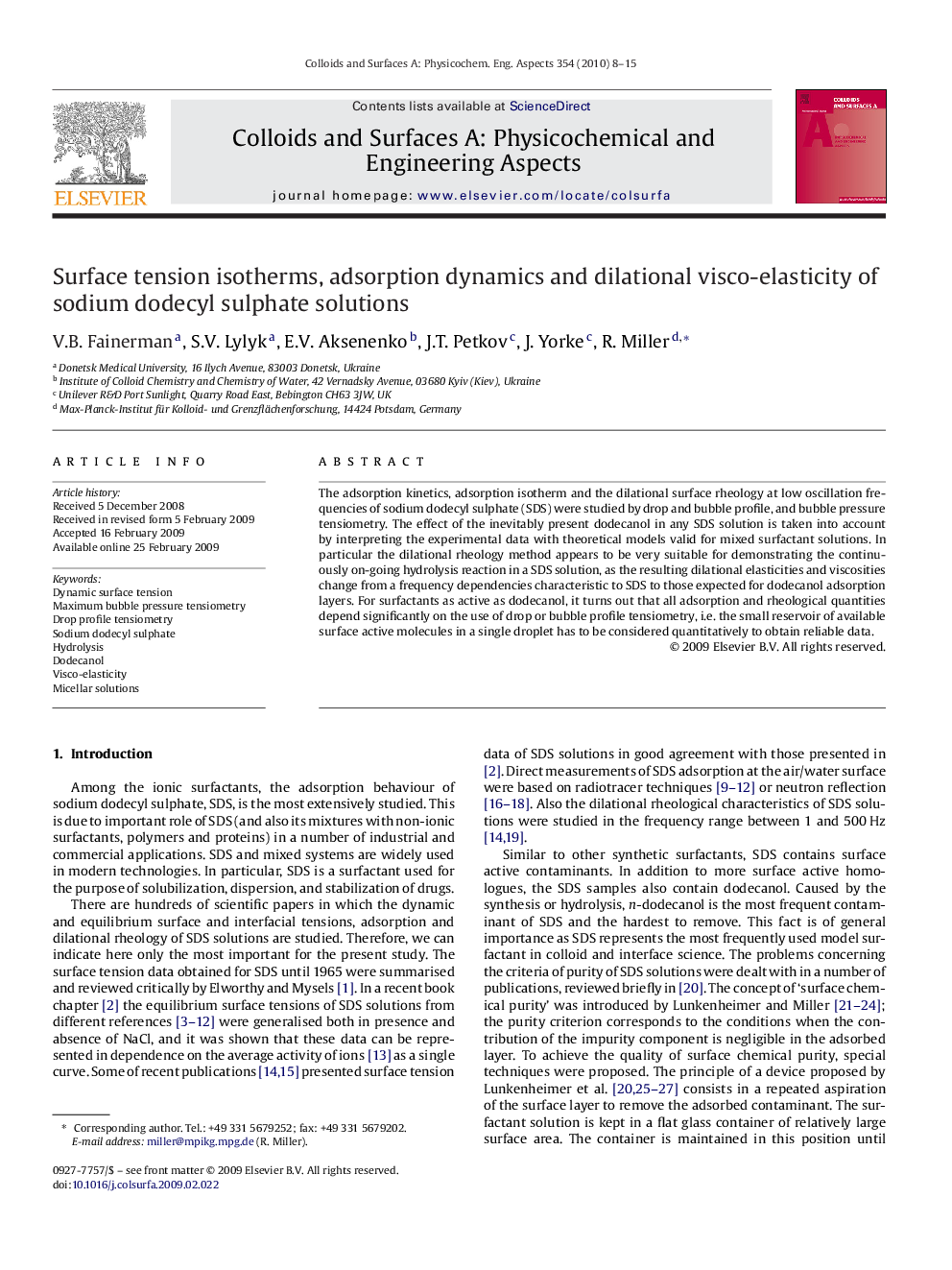| Article ID | Journal | Published Year | Pages | File Type |
|---|---|---|---|---|
| 595598 | Colloids and Surfaces A: Physicochemical and Engineering Aspects | 2010 | 8 Pages |
Abstract
The adsorption kinetics, adsorption isotherm and the dilational surface rheology at low oscillation frequencies of sodium dodecyl sulphate (SDS) were studied by drop and bubble profile, and bubble pressure tensiometry. The effect of the inevitably present dodecanol in any SDS solution is taken into account by interpreting the experimental data with theoretical models valid for mixed surfactant solutions. In particular the dilational rheology method appears to be very suitable for demonstrating the continuously on-going hydrolysis reaction in a SDS solution, as the resulting dilational elasticities and viscosities change from a frequency dependencies characteristic to SDS to those expected for dodecanol adsorption layers. For surfactants as active as dodecanol, it turns out that all adsorption and rheological quantities depend significantly on the use of drop or bubble profile tensiometry, i.e. the small reservoir of available surface active molecules in a single droplet has to be considered quantitatively to obtain reliable data.
Keywords
Related Topics
Physical Sciences and Engineering
Chemical Engineering
Colloid and Surface Chemistry
Authors
V.B. Fainerman, S.V. Lylyk, E.V. Aksenenko, J.T. Petkov, J. Yorke, R. Miller,
